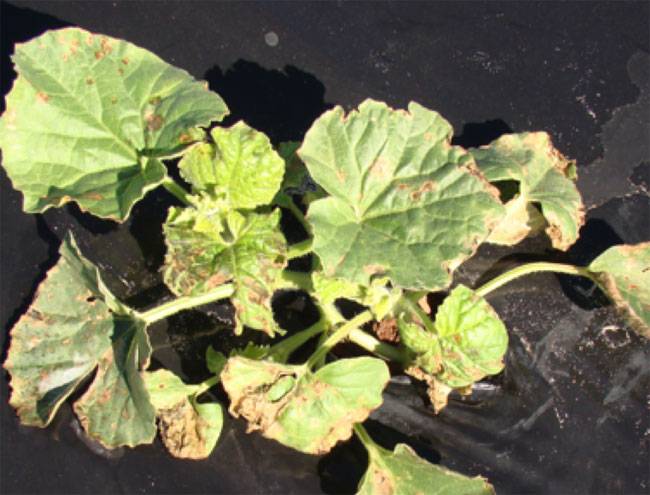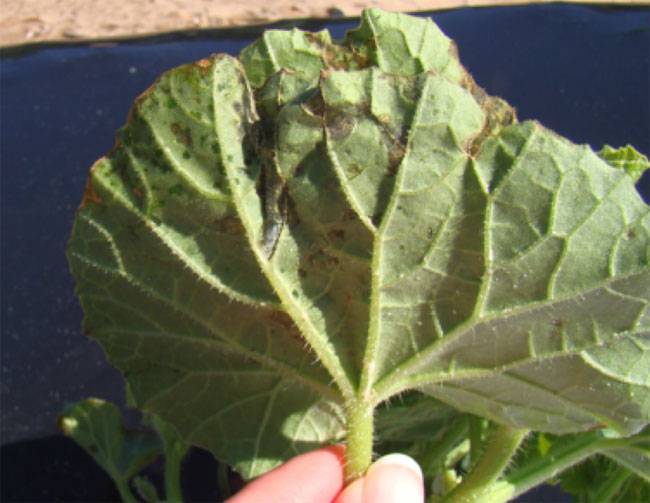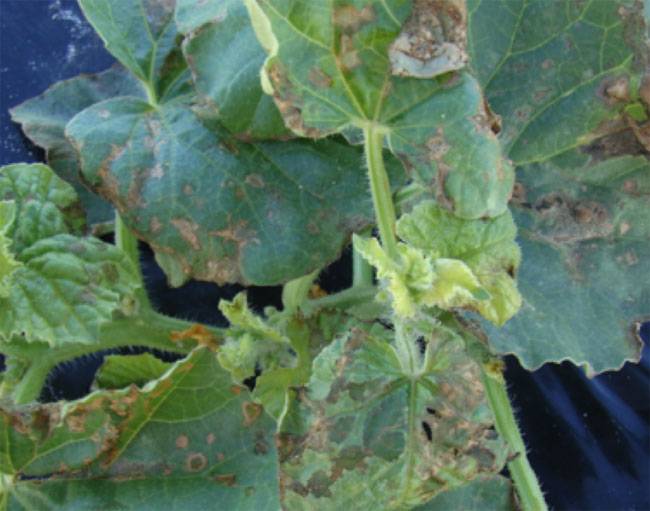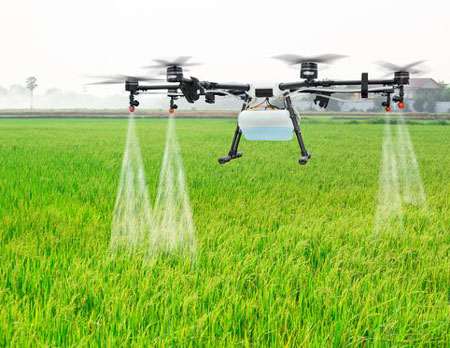Ridge Gourd
Bacterial Leaf Spot

Pseudomonas syringae
Bacterial Disease

Pseudomonas syringae
Bacterial Disease

Pseudomonas syringae
Bacterial Disease
Bacterial leaf spot in cucumbers, caused by Pseudomonas syringae, is a significant disease affecting cucurbits, including cucumbers, watermelon, cantaloupe, and squash. The disease impacts leaf health, fruit maturity, and transplant survival, particularly in cool and wet conditions. Understanding its symptoms, development, and management is crucial for effective control.
Symptoms
Lesion Appearance:
- Small brown to black lesions, angular in shape, sometimes with or without a yellow halo.
- Lesions may occur on leaf margins and lamina.
Water-Soaking:
- Early signs include water-soaked areas on leaves, visible on both sides.
- Flip the leaves to detect water-soaking during initial infection.
Progression:
- Severe infections lead to major leaf damage and, in extreme cases, complete loss of transplants.
- Delayed fruit maturity occurs due to reduced plant vigor.
Disease Development
Causal Pathogen:
- Pseudomonas syringae exhibits two growth phases:
- Epiphytic Phase: Bacteria live on the plant's surface.
- Endophytic Phase: Bacteria enter the plant through stomata or wounds and colonize intercellular spaces (apoplast).
- Pseudomonas syringae exhibits two growth phases:
Environmental Conditions:
- Optimal temperature for bacterial growth is ~28°C but can occur between 23–33°C.
- High humidity promotes bacterial aggregation, swarming motility, and increased virulence.
- Cool and wet conditions, particularly in early spring and late fall, favor the disease.
Spread:
- Splashing rain aids in dispersal.
- The bacteria can survive in seeds, plant debris, infected transplants, and weeds.
Virulence Mechanisms:
- Produces toxins like coronatine and syringomycin, which:
- Inhibit plant immune responses.
- Cause damage by forming pores in plant membranes and increasing bacterial movement.
- Produces toxins like coronatine and syringomycin, which:
Impact
- Significant transplant damage under ideal conditions.
- Delayed fruit maturity due to poor plant health.
- Severe infections can cause complete loss of transplants, particularly in young plants.
Management Tips
Cultural Practices:
- Avoid working with wet plants to prevent bacterial spread.
- Rotate crops and avoid planting cucurbits in the same location for successive seasons.
Sanitation:
- Remove and destroy infected debris and weeds to minimize inoculum sources.
- Use certified disease-free seeds and healthy transplants.
Environmental Management:
- Ensure good drainage to avoid waterlogged fields.
- Adjust irrigation to prevent prolonged leaf wetness.
Chemical Control:
- Apply copper-based bactericides as a preventive measure.
- Use treatments early in the season during favorable environmental conditions for the disease.
Conclusion
Bacterial leaf spot of cucumbers poses a significant threat to cucurbit crops, especially under cool and wet conditions. Early detection, coupled with effective cultural, sanitary, and chemical measures, is essential for controlling the disease and ensuring healthy crop production. By understanding the pathogen’s life cycle and environmental preferences, growers can reduce losses and improve yield quality.




